Typically life is good for the hundreds of Northern Harriers who spend fall and winter in the marshes and prairies surrounding the Great Salt Lake after spending breeding season up north. Here their diet consists almost exclusively of microtine voles (small rodents resembling mice). These voles are incredibly abundant and relatively easy prey. It’s quite unusual to see a harrier even attempt to catch a songbird or anything else for that matter.
Harrier hunting voles near the Great Salt Lake
However the easy life takes a major turn for the worse during unusually harsh winters with intense cold and deep snow packs. During these times the voles spend most of their time underground eating roots and dried vegetation which means the primary source of food for harriers is suddenly unavailable just when they most need nourishment for warmth. And since most songbirds (their fall-back food source) have either migrated south or have already succumbed to the many American Kestrels in the region, simple survival for the harriers is suddenly very precarious.
Now, out of desperation, harriers begin to go for larger prey – ducks and coots for example.
Harrier on a duck kill frozen into the ice
They aren’t able to take these prey often and when they do they can’t eat them quickly like they can a vole. The result is intense aggression – fighting fiercely over food. Typically I see very little true aggression(other than territorial squabbles) between harriers but all that changes when food becomes scarce. A relatively large prey item will provide multiple harriers with enough food for several days but it’s apparently not in their nature to share.
Typical posture over a kill (Mallard) to prevent other harriers from trying to feed on “their” meal
There’s lots of posturing and body language at a kill in an attempt to prevent fighting but in harsh times it’s usually to no avail and fighting is commonplace.
so.
Harriers fighting over a Mallard (under the tail of bird on right). Note the talons imbedded in the chest of the harrier on the left.
The fighting can be vicious. Their weapon of choice is their feet and talons and they are incredibly fast with them. Blazingly so.
Fighting over winter-killed fish
When voles are accessible I’ve never once seen harriers eating fish, even when the fish are readily available, but when the birds are starving they take the fish very seriously.
Two harriers, stuffed to the gills on carp
Even when there’s a temporary abundance of food as in the case with this huge carp, tranquility doesn’t last long. The two birds above had eaten their fill in peace since the fish was so large they could both feed without the other seeming to be a threat. However, even when finished feeding they defended their fish against other harriers.
A surprise attack
The two harriers were satiated on carp and so lethargic they didn’t even notice another challenger coming in until the very last moment. As you can see they were caught off guard but they still defended their meal and another vicious fight broke out.
I watched these fights a number of times over several weeks. Interestingly, all of them involved females or possibly juvenile males. Even though there were adult males in the immediate vicinity they never actively joined in the competition for food. Since then I’ve learned why. According to Birds of North America (BNA) Online “females are dominant to males” and “females win virtually all aggressive interactions with males”.
Adult male Northern Harrier
As you can see, adult males are easily distinguishable from adult females and juveniles of both sexes. Adult males are largely gray (the “gray ghost”) and have intensely yellow eyes.
Ron


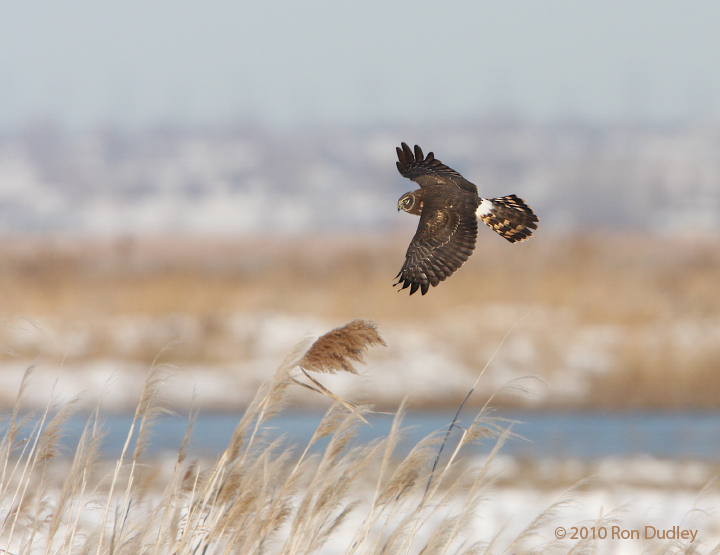
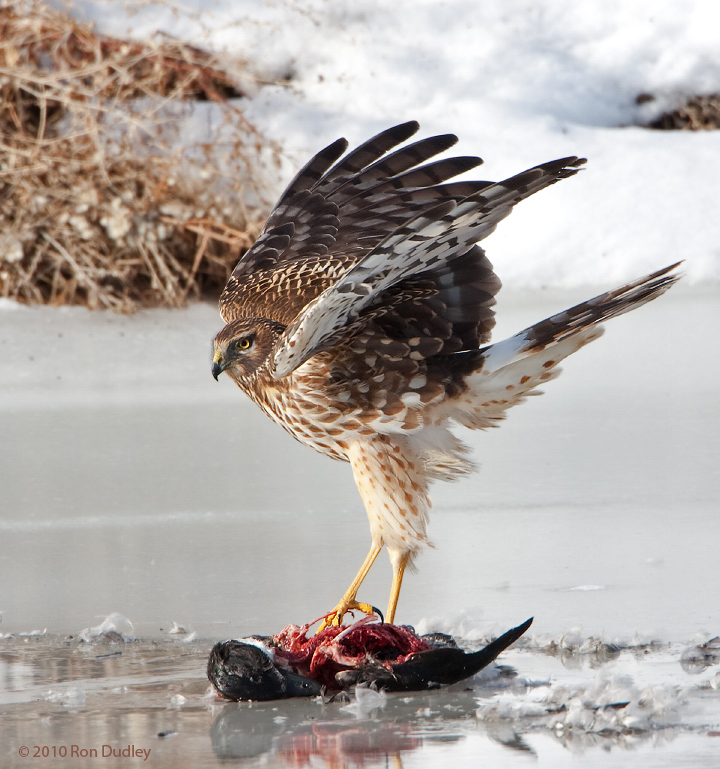
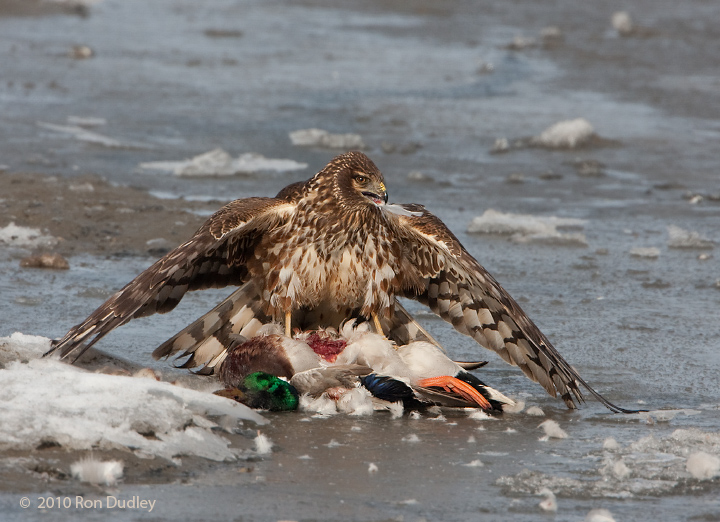

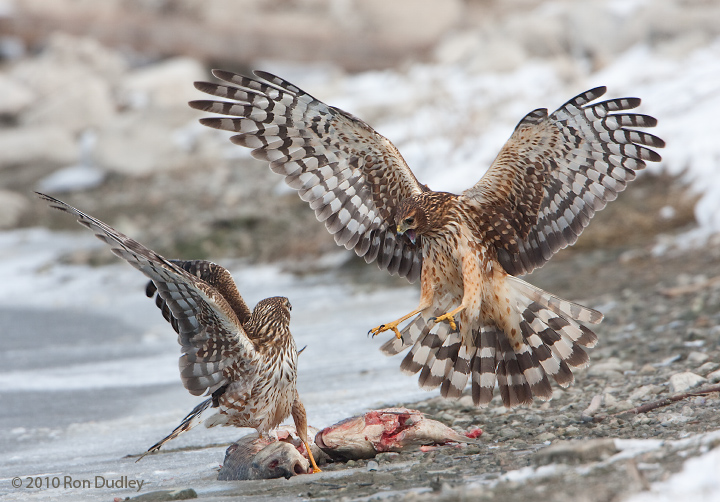
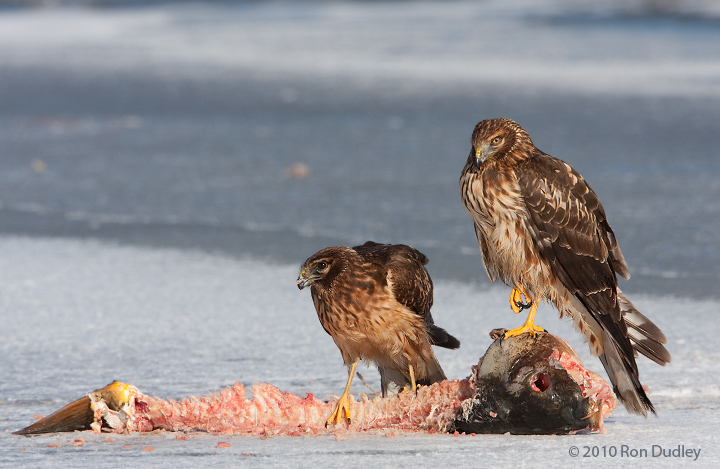
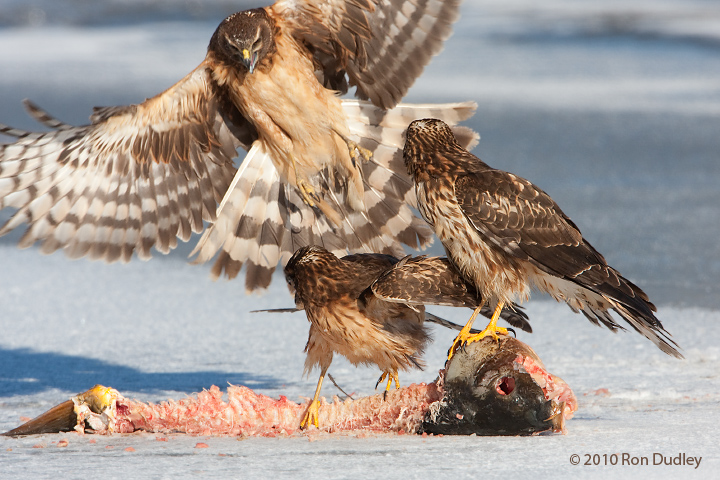
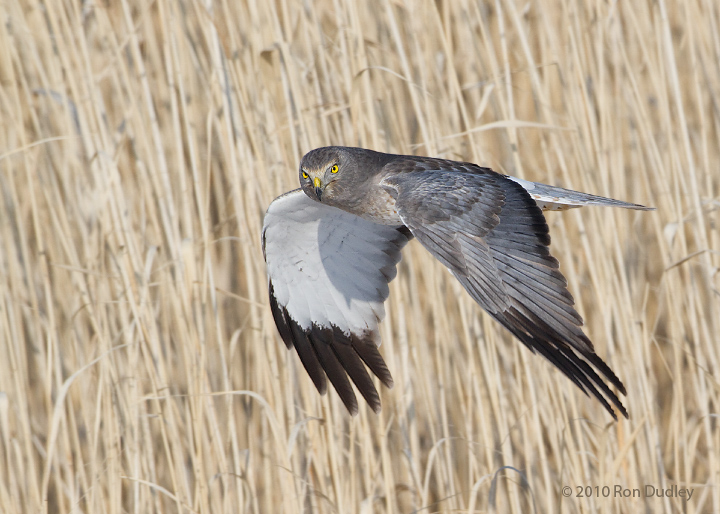
A incredible photo-essay Ron, your blog rocks!
Awesome action captured and an interesting article.